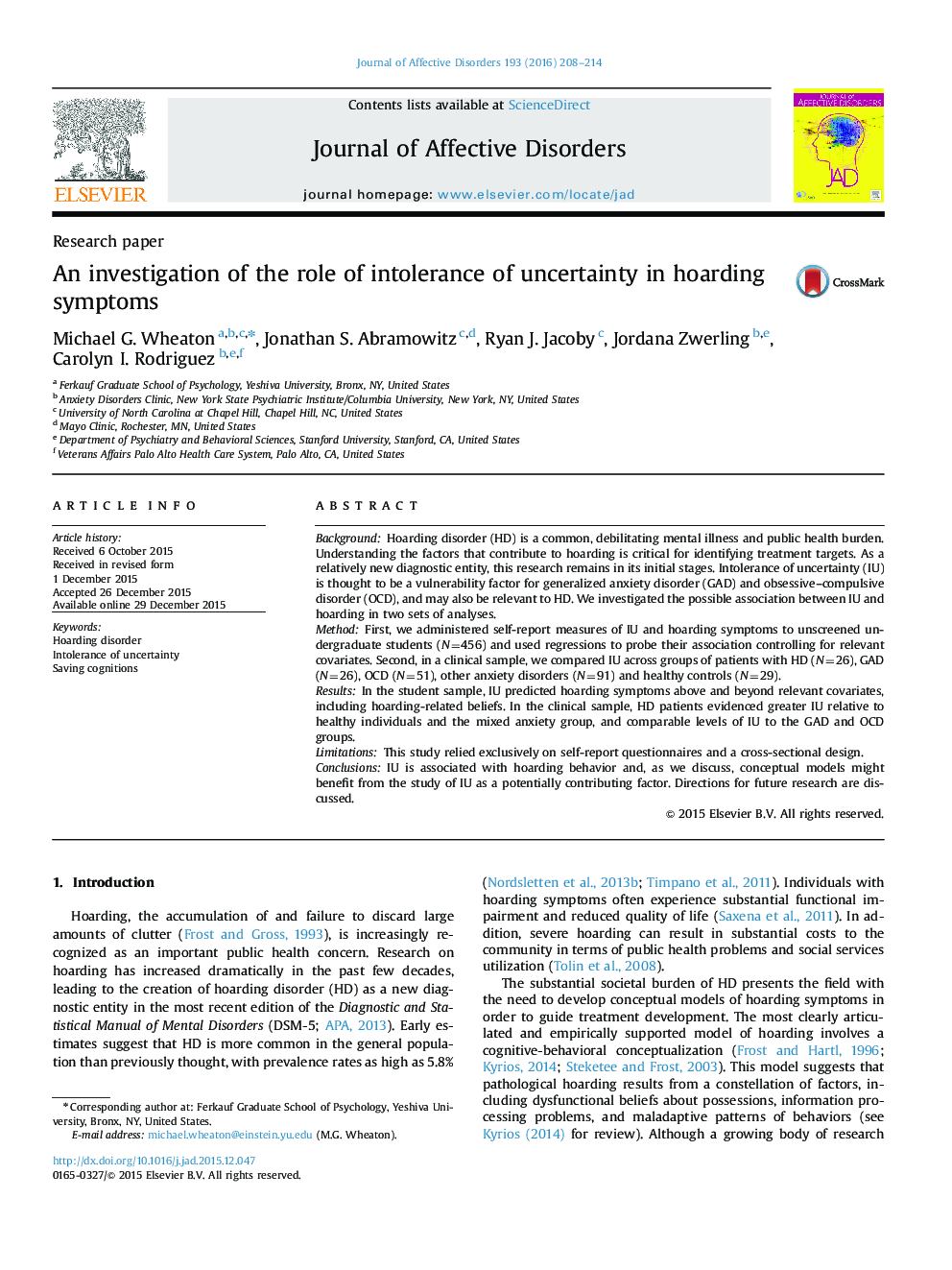| کد مقاله | کد نشریه | سال انتشار | مقاله انگلیسی | نسخه تمام متن |
|---|---|---|---|---|
| 6230468 | 1608132 | 2016 | 7 صفحه PDF | دانلود رایگان |
- We investigated the link between intolerance of uncertainty (IU) and hoarding.
- In a student sample, IU predicted hoarding behaviors beyond relevant covariates.
- Hoarding disorder (HD) patients had elevated IU compared to healthy controls.
- Levels of IU were not significantly different between HD, GAD, and OCD patients.
BackgroundHoarding disorder (HD) is a common, debilitating mental illness and public health burden. Understanding the factors that contribute to hoarding is critical for identifying treatment targets. As a relatively new diagnostic entity, this research remains in its initial stages. Intolerance of uncertainty (IU) is thought to be a vulnerability factor for generalized anxiety disorder (GAD) and obsessive-compulsive disorder (OCD), and may also be relevant to HD. We investigated the possible association between IU and hoarding in two sets of analyses.MethodFirst, we administered self-report measures of IU and hoarding symptoms to unscreened undergraduate students (N=456) and used regressions to probe their association controlling for relevant covariates. Second, in a clinical sample, we compared IU across groups of patients with HD (N=26), GAD (N=26), OCD (N=51), other anxiety disorders (N=91) and healthy controls (N=29).ResultsIn the student sample, IU predicted hoarding symptoms above and beyond relevant covariates, including hoarding-related beliefs. In the clinical sample, HD patients evidenced greater IU relative to healthy individuals and the mixed anxiety group, and comparable levels of IU to the GAD and OCD groups.LimitationsThis study relied exclusively on self-report questionnaires and a cross-sectional design.ConclusionsIU is associated with hoarding behavior and, as we discuss, conceptual models might benefit from the study of IU as a potentially contributing factor. Directions for future research are discussed.
Journal: Journal of Affective Disorders - Volume 193, 15 March 2016, Pages 208-214
